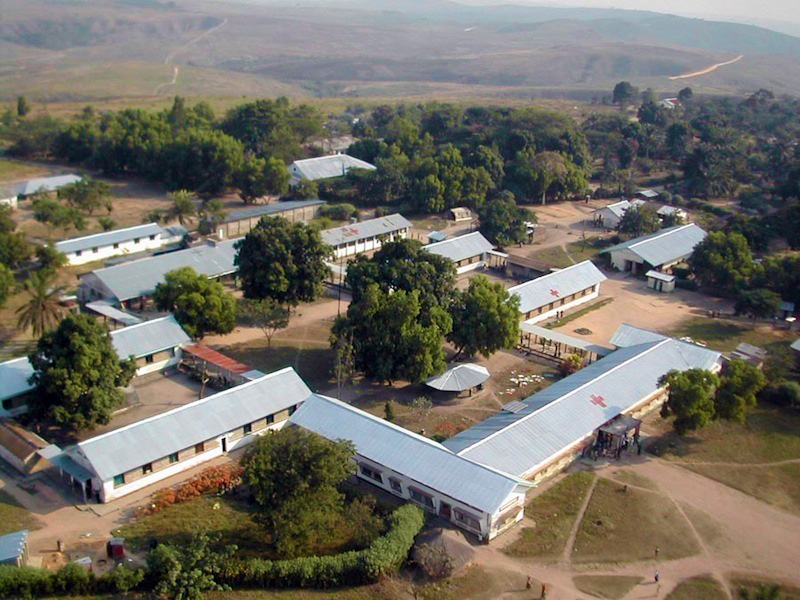
Key Takeaways:
-
Kabinda offers a mix of rich cultural heritage, nature-based activities, and local festivals that provide travelers with immersive, off-the-beaten-path experiences.
-
The region is known for its scenic landscapes, vibrant markets, and traditions passed down through generations.
-
Whether you’re into hiking, cultural exchange, or discovering hidden gems, Kabinda gives you a raw and authentic look at DR Congo’s heartland.
Kabinda, the capital of Lomami Province in the Democratic Republic of Congo, is a city surrounded by fertile hills, rivers, and deeply rooted traditions. Once a colonial-era administrative post, it has evolved into a culturally vibrant town that proudly maintains its ancestral customs and community-based lifestyle. Unlike larger urban centers, Kabinda offers a tranquil pace and a closer connection to Congolese village life.
Visitors are drawn to Kabinda’s authenticity. The people are welcoming, the land is lush, and the stories are old. Whether you’re hiking through untouched nature, joining a traditional festival, or exploring regional crafts, this city offers year-round activities for curious and respectful travelers seeking a deeper connection with DR Congo.
Table of Contents
-
Hike the Trails Around the Lomami River Valley
-
Explore Kabinda’s Central Market
-
Visit the Historic Catholic Mission and Church
-
Experience Traditional Lomami Dance Performances
-
Take a Guided Visit to Local Cassava Farms
-
Discover the Sacred Forests Near Ngandajika
-
Celebrate Local Culture During Independence Day Events
-
Join a Village Storytelling Night with Elders
-
Explore Nearby Waterfalls and Rock Formations
-
Visit the Women’s Artisan Cooperatives in Town
1. Hike the Trails Around the Lomami River Valley
The Lomami River is a lifeline to the region, and its surrounding valleys offer breathtaking hiking routes filled with natural beauty. The trails wind through lush farmland, hillsides dotted with baobab trees, and panoramic lookouts where birds of prey circle overhead. These paths are used daily by locals, giving visitors a chance to walk alongside people going to market or tending to their land.
You can explore on your own or arrange a local guide to provide deeper context about the plants, history, and wildlife. The air is clean, the pace is peaceful, and the sounds of the forest follow you wherever you go. Early mornings and late afternoons offer the best lighting and cooler weather. Be sure to pack water, wear durable shoes, and bring something to trade or gift to locals you meet on the way.
2. Explore Kabinda’s Central Market
At the heart of Kabinda lies its bustling central market—a sensory overload of color, sound, and flavor. Farmers and artisans from nearby villages gather here daily to sell everything from cassava, groundnuts, and bush meat to handmade tools, fabric, and herbal medicines. The market is not only a place to shop but a true social hub where deals are struck and stories are shared.
Wandering through the stalls offers insight into the daily rhythm of life in Kabinda. Don’t be shy to greet vendors or ask questions—they’re often excited to share their knowledge or offer you a taste of something unique. Bargaining is expected, and bringing small bills is advised. For an authentic experience, visit early in the morning when it’s at its most vibrant.
3. Visit the Historic Catholic Mission and Church
Kabinda’s Catholic mission, established in the early 20th century, is both a spiritual landmark and a historical site. The church itself features colonial-era architecture, local stone construction, and hand-carved wooden fixtures that speak to a blend of European and Congolese craftsmanship. It remains active today, hosting services that draw large crowds on Sundays and special feast days.
Visitors are welcome to attend a service or take a quiet tour of the grounds. The mission also houses a small library and a cemetery where notable early community figures are buried. It’s a peaceful spot, surrounded by gardens and shaded paths, ideal for reflection or conversation with local clergy. If you’re interested in how religion has shaped the region, this stop is essential.
4. Experience Traditional Lomami Dance Performances
One of the richest cultural experiences in Kabinda is witnessing traditional Lomami dance. Performed at weddings, festivals, or harvest celebrations, these dances combine drum rhythms, call-and-response chants, and bold choreography that reflects local stories and social themes. Dancers often wear elaborate costumes made from raffia, beads, and feathers.
If you’re lucky, you might catch a performance in the central square or be invited to a village ceremony. Travelers are usually welcomed warmly, especially if they participate respectfully or bring small offerings. The energy, movement, and music are unforgettable. To arrange a performance or find out about upcoming events, ask at the local cultural center or with your guesthouse host.
5. Take a Guided Visit to Local Cassava Farms
Cassava is a dietary staple in Kabinda and plays a vital role in the area’s economy and traditions. A visit to a working cassava farm offers insight into how locals plant, harvest, process, and prepare this versatile crop. You’ll learn about fermentation techniques, see traditional grinding stones in action, and may even help prepare foufou (a thick cassava dough).
These visits are best arranged through local guides or by asking village elders directly. Most farmers are eager to share their knowledge and proud of their work. It’s also a chance to experience daily life firsthand, far from the typical tourist path. Bring a notebook and your curiosity—you’ll leave with more than just information.
6. Discover the Sacred Forests Near Ngandajika
Just outside Kabinda, near the town of Ngandajika, lie ancient sacred forests believed by locals to house spirits and ancestral energies. These forests are used for rituals, initiation ceremonies, and traditional medicine harvesting. Visitors who enter with permission and a knowledgeable guide can learn about the stories, taboos, and cultural importance that make these spaces so revered.
The walk through these forests is both serene and powerful. Dense canopies filter sunlight onto mossy paths, and birdsong accompanies every step. Respectful behavior is essential—photography and loud noise are discouraged. This experience connects travelers to the spiritual dimensions of local life and offers a unique glimpse into Congo’s living traditions.
7. Celebrate Local Culture During Independence Day Events
Each year on June 30th, Kabinda joins the rest of DR Congo in celebrating Independence Day with a mix of patriotic pride and community celebration. The streets fill with flag-waving children, drumming groups, and military-style parades. Local schools, musicians, and dance troupes perform in the town square, making it one of the liveliest times to visit.
The atmosphere is full of color, music, and togetherness, and travelers are usually welcomed into the celebrations. This is also a great opportunity to try local dishes served at pop-up food stands, such as grilled goat or spicy fish with plantains. Bring your camera and your dancing shoes—this is Kabinda at its most joyful and unified.
8. Join a Village Storytelling Night with Elders
Storytelling remains one of the most important ways traditions are passed down in Kabinda and the surrounding villages. On select evenings, elders gather around fires or under moonlit trees to share myths, histories, and personal tales. Stories are told in local dialects and translated into Lingala or French for broader understanding.
These gatherings are not performances but communal rituals, filled with lessons, laughter, and moral teachings. Guests who attend with respect are often invited to ask questions or share their own stories. It’s a rare and deeply humanizing experience. To attend, ask your local host or guide to connect you with a village leader.
9. Explore Nearby Waterfalls and Rock Formations
Kabinda’s hilly terrain hides several small waterfalls and striking rock outcrops that can be reached with a short motorbike ride or hike. These natural spots are often unmarked and uncrowded, offering peaceful retreats for swimming, birdwatching, or meditation. Locals may know them by names that reference legends or events tied to the area.
Pack snacks, water, and good shoes—the paths can be slippery or steep in places. These excursions are best done with a guide who knows the area and its safe routes. Some of the rock formations resemble animals or faces, making them interesting for photos and local lore. Nature lovers will find these hidden gems to be among Kabinda’s best-kept secrets.
10. Visit the Women’s Artisan Cooperatives in Town
Kabinda is home to several women-led cooperatives that produce beautiful handmade goods, including woven mats, beaded jewelry, pottery, and embroidered clothing. These groups not only preserve traditional skills but also empower local women with economic independence and community leadership. Visitors can tour workshops, watch demonstrations, and purchase ethically made souvenirs.
Meeting the artisans and learning about their processes makes every purchase meaningful. Many co-ops offer short craft lessons or allow guests to try their hand at simple tasks. It’s a perfect way to support the local economy while learning something new. These visits are arranged easily through the community development office or cultural centers in town.
What to do if you have kids?
Kabinda is very family-oriented, and kids are warmly welcomed almost everywhere. Children will enjoy exploring local markets, watching traditional dancers, or taking short hikes to nearby rivers and hills. Parks and open spaces near churches and schools provide room to play, and many local festivals include games and snacks geared toward younger visitors. Bring familiar snacks, water, and basic toys for downtime, and prepare for lots of friendly attention from local kids eager to meet new friends.
Where can I find free events in Kabinda DR Congo taking place this weekend?
To find free local events in Kabinda—from music nights and cultural celebrations to artisan workshops and community games—use https://planmyweekend.ai. The tool highlights free, family-friendly, and alcohol-free events happening right near you. It’s the best way to uncover what’s happening this weekend and experience Kabinda like a local.
Final thoughts on planning a trip here
Kabinda offers something rare in today’s travel world—authenticity untouched by mass tourism. Its welcoming spirit, cultural depth, and natural beauty make it a rewarding destination for the curious and the kind. Whether you’re hiking quiet trails, listening to elders’ stories, or sharing a meal at a roadside stall, Kabinda invites you to slow down and connect. This is not just a place to visit—it’s a place to remember.
Author: Dejon Brooks
Dejon Brooks is an entrepreneur who founded Trend Watchers with his life savings. Aged 24, Dejon has turned Trend Watchers into a successful business. After reaching over 150M+ people on his personal accounts, he now spends his time growing Planmyweekend.ai


